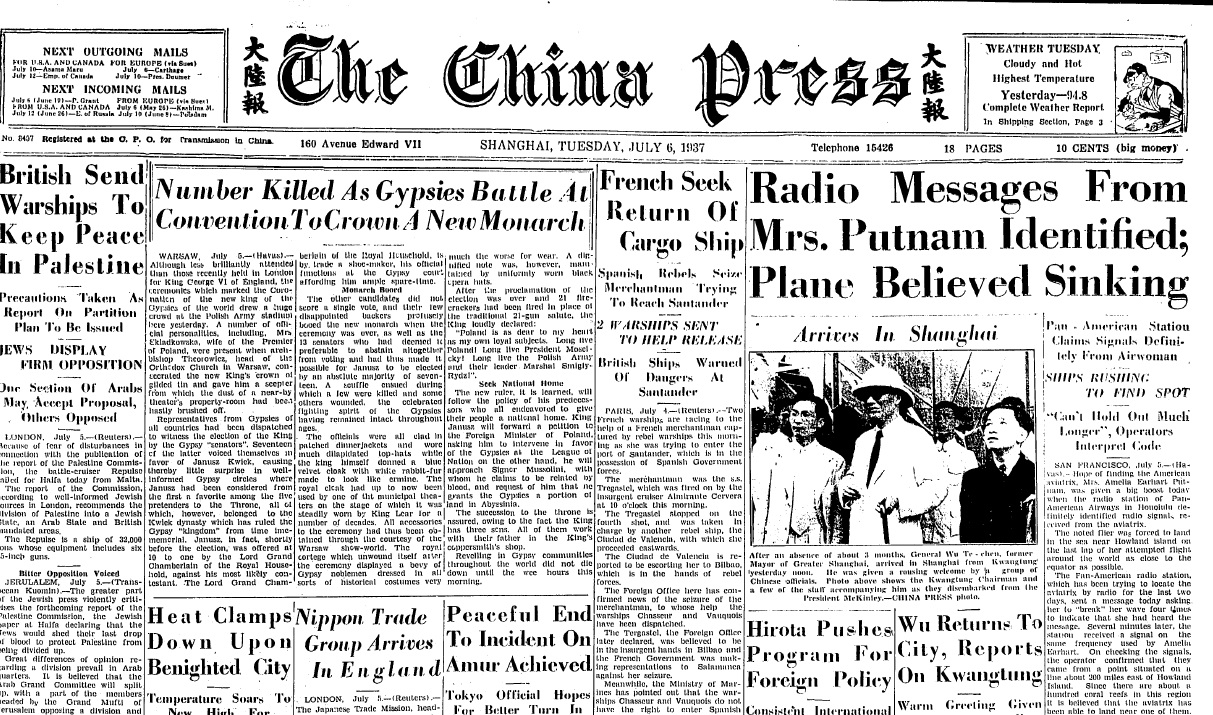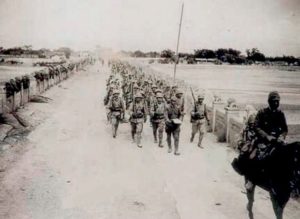Asia’s Last Day of Peace
- By Peter Harmsen
- 6 July, 2017
- No Comments
 Eighty years ago, Tuesday, July 6, 1937, was the last day of peace in Asia. The following day, Chinese and Japanese forces would clash at Marco Polo Bridge near the ancient capital of Beijing, triggering an all-out war between the two Asian nations and in turn setting in motion complex chains of events which would eventually lead to the cataclysm now known as the Pacific War.
Eighty years ago, Tuesday, July 6, 1937, was the last day of peace in Asia. The following day, Chinese and Japanese forces would clash at Marco Polo Bridge near the ancient capital of Beijing, triggering an all-out war between the two Asian nations and in turn setting in motion complex chains of events which would eventually lead to the cataclysm now known as the Pacific War.
That was still blissfully in the future on July 6. What occupied the people of Asia on that day? A glance at the papers reveals a world in relative peace, obviously believing, or wanting to believe, that this would continue to be the case, perhaps indefinitely.
The top item in The China Press, published in Shanghai, was the search for legendary aviator Emilia Earhart, lost somewhere over the Pacific. Another top item, out of Warsaw, described violent clashes as the Gypsies of the world assembled to elect their new king.
Closer to home, the paper reported tensions seemingly easing along the border between the Soviet Union and Japanese-controlled Manchukuo in northeast China. The frictions had led to large numbers of Japanese and Soviet troops amassing in the frontier areas in the preceding days, but now a “peaceful end” had been achieved, with Japanese officials even voicing the belief that better relations with Moscow were possible.

Japanese troops on Marco Polo Bridge
Japan’s relations with another potential rival, the British Empire, also appeared to be improving. The paper reported the arrival in London of a 24-member Japanese trade mission, expected to be pushing for greater access to commerce with the British colonies. Also on the program for the Japanese industrialists and bankers was a golf match between the teams of Eton and Harrow.
Halfway around the world, The New York Times also decided the search for Emilia Earhart was the most important news of the day. Otherwise, the front page was mainly about domestic news, reflecting the inward-looking atmosphere in an America where isolationism was supported by a significant part of the population. In sports, the Yankees had beaten the Red Sox, drawing the second-largest crowd of the year.
In the only indication of dangers lurking abroad, President Franklin D. Roosevelt was quoted as telling the Public Affairs Institute that a war abroad would be a worldwide disaster and cause immense suffering that would affect even the United States.
Meanwhile, unbeknownst to the newspaper readers, on July 6 in the area near Beijing, Japanese soldiers were getting ready for a night of maneuvers in the hot Chinese countryside. This was nothing out of the ordinary, and had been done numerous times before, both to improve military preparedness and to intimidate the Chinese with the might of Japan’s Army. Among the areas to be included during the maneuver: Marco Polo Bridge, a location soon to be renders world-famous.



 Copyright © 2025
Copyright © 2025
Leave a Reply